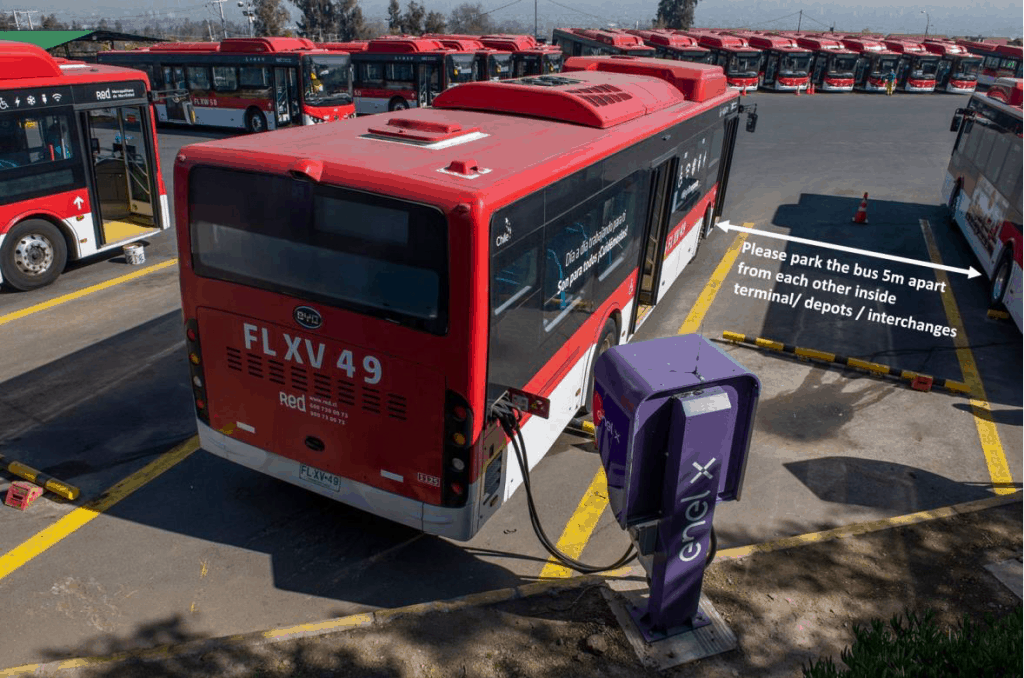As the extended lockdown imposed to arrest the spread of COVID-19 starts to see graded relaxation, cities now have to plan how to open up non-hotspot zones. The latest guidelines from the Ministry of Home Affairs have already permitted, with effect from May 4th, the operation of buses and bus depots in green zones, but at 50% capacity only.
With lesser restrictions on work and mobility, resuming public transportation services presents a seemingly contradictory challenge — servicing an already massive passenger base, while at the same time implementing social distancing measures.
Of all the public modes of transport, buses/trams are the most used by Indians, with 62% rural and 66% urban households using them according to a 2016 NSSO survey. Bus services in many cities also work far over capacity, making them a potential hazard during the pandemic.
Also Read: How should BMTC buses be run now, given social distancing challenges?
To address some of these concerns, German sustainable development consultancy GIZ, recently released a report on Standard Operating Procedures (SOPs) for Bus Transport in India after the lockdown.
The report recommends SOPs based on best-practices followed in other parts of the world, but keeping the context on urban transport in India. The recommendations made in the report depend on two key policy measures, based on which specific Standard Operating Procedures (SOPs) are determined.
Less than one-third occupation: To deal with the challenge of ensuring both efficient mobility and social distancing, the report suggests cutting the occupancy of buses to less than one-third after the lockdown.

Staggered demand – With the need to cut passenger limit to less than a third, many regular commuters may not be able to use the bus service. Moreover, large gatherings at bus depots, workplaces and inside the buses themselves are likely to occur.
To tackle this problem, the report suggests a policy of staggered demand – having different work and operation hours/days for high-demand areas (markets, offices, factories, etc.)
“Staggered work hours as a policy has been experimented with before in India, with Delhi introducing the idea last year. When implemented properly, staggered work hours can spread peak hour traffic over a much longer period of time and reduce traffic congestion. According to the report, implementing this policy is essential at a time when the number of passengers travelling in each bus will have to be minimized. ”
– GIZ India Report
Specific Recommendations of the GIZ Report
- SOPs for locations of high passenger demand: Staggered working hours/days for offices, markets, government institutions, hotels and restaurants for at least three months; promotion of work-from-home where possible.
- SOPs for buses: Ensure no reduction in supply of buses and if possible increase capacity on high-demand routes; maximum 18-20 passengers for 12 m bus and 12-14 for 9 m bus; marking of seats for social distancing and regular disinfection.

- SOPs for bus shelters and depots: Mandatory physical distancing for passengers through markings at bus stops and regular sanitisation; minimum 5 meter distance between parked buses at depots and crowd management to avoid crowding.

- SOPs for bus driver and conductor: PPEs for both and regular temperature checks; separated section for driver and minimization of cash transactions for conductor, instead relying on a drop box, online payments or passes.

- SOPs for non-motorised transport (NMT): Creation of cyclist and pedestrian lanes on both sides of high density roads reserved for NMTs; widening of footpaths by a minimum 2.5 metres.

- SOPs for communication: Spreading information effectively to passengers and staff will be key to implementing these recommendations. Passengers have to be made aware of the measure taken to ensure safety to build trust. Timely information on new changes in timings, routes and norms must be communicated through news, ads, posters, social media, etc. A two-way communication channel between the control room and staff; regular training and briefings for staff will be helpful as well.